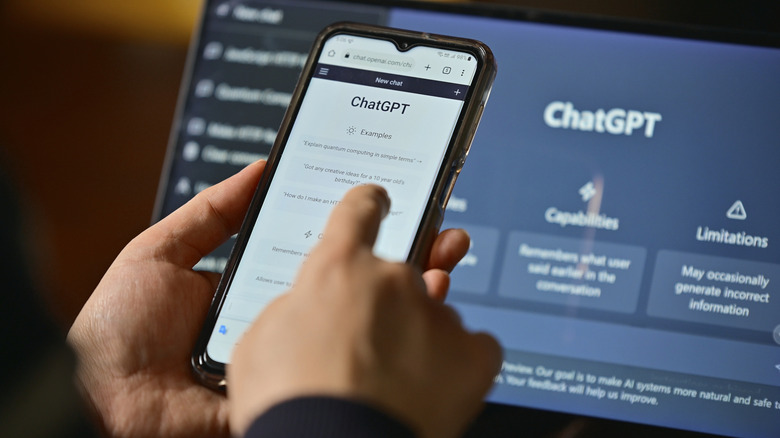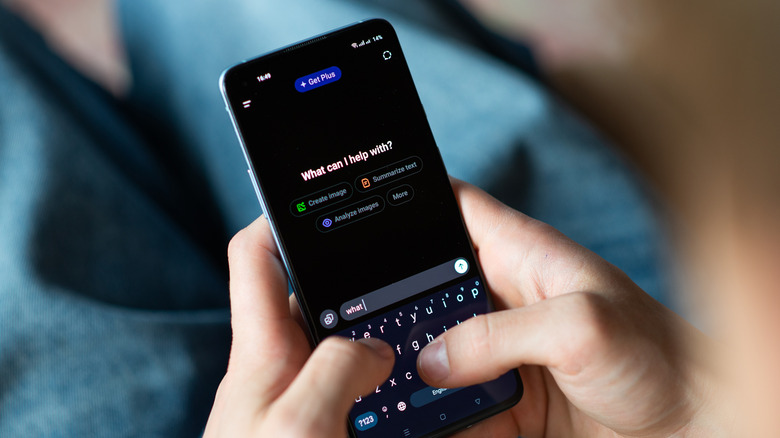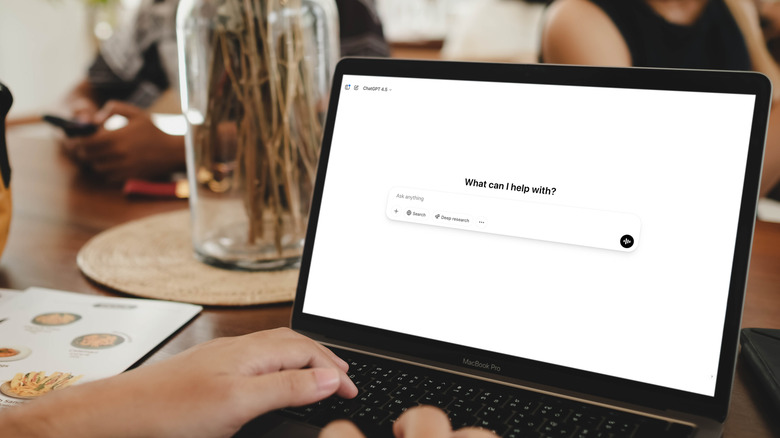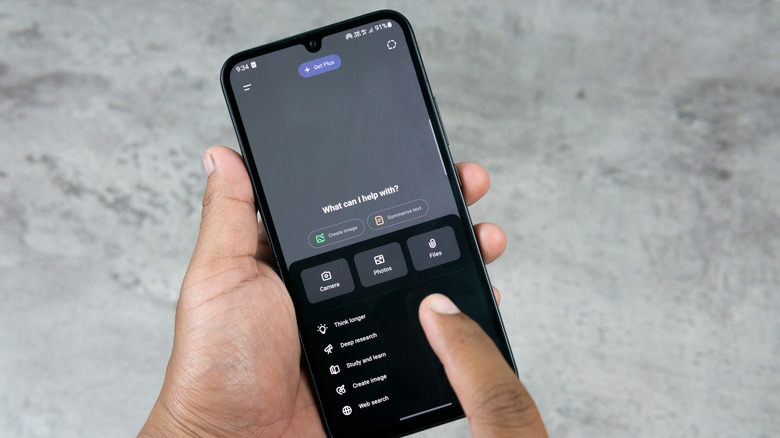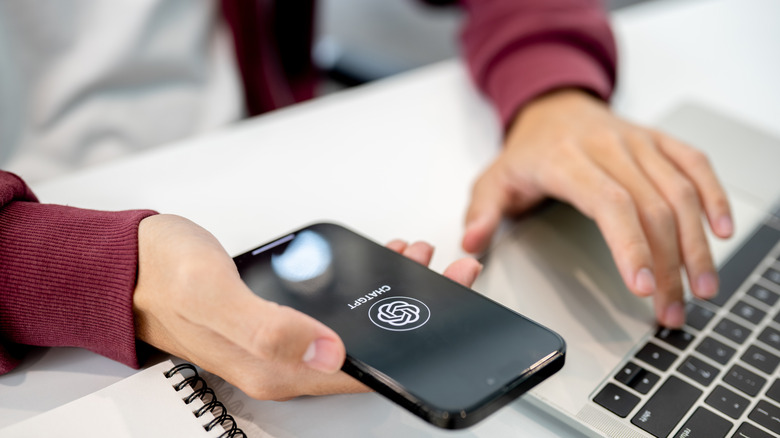5 Tips To Master ChatGPT In Your Daily Life
Unless you've been actively avoiding it, you're probably using ChatGPT in your daily life. It can be helpful in countless scenarios, whether that's drafting emails, learning new skills, or helping you plan an important project. But if you feel like it tends to give generic or half-baked answers, we've put together some tips that'll help you master the app for maximum value. The secret doesn't lie in some hidden hacks or memorizing prompts, but rather in collaborating with it.
With a few simple strategies, you can say goodbye to random outputs and turn your ChatGPT into something that feels almost like a personal assistant or creative partner. These tips aren't just about getting answers faster but also about some simple habits that'll train the chatbot to work better for you. The great thing is, your creativity and preferences are the key to getting the most out of ChatGPT every time you use it. Try the tips below, and we're sure you'll notice a difference in how the tool works for you.
Personalize it by giving details
One of the easiest ways to master ChatGPT is to give it as much information and context as possible. This will help it give you personalized responses that are far more valuable than the usual generic ones it might give anyone else. For instance, instead of saying, "Give me a five-day London travel itinerary," you could say, "Give me a five-day London travel itinerary that allows plenty of time for relaxation and prioritizes exploring museums."
Additional information and context helps the model understand exactly what you're looking for and create a more curated response. You can also include details about yourself to make the output even more relevant. For example: "I enjoy a slow pace of travel and prefer fine dining experiences. I would like to avoid crowded places."
You can use ChatGPT's "Edit message" hack to add such details without needing to type new prompts each time. Similarly, if you need help with an email, don't just ask, "Write a professional email." Instead, try: "Write a friendly yet professional email to a potential client, introducing my event management services. I want to sound approachable but confident." Adding context about your preferences and goals allows ChatGPT to give you more relevant responses. The more specific you are about what you want, the more ChatGPT feels like a personalized assistant rather than a generic chatbot.
Ask for multiple options
ChatGPT is like an endless treasure chest — the more you explore, the more you'll get out of it. So, don't just accept the first suggestion it gives you. Rather, ask for more options, and you'll probably get better responses. For instance, suppose you want a caption to post with your London travel pictures on Instagram. Don't just say, "Write a caption about London. Instead, try, "Give me five Instagram captions about London — one witty, one poetic, one travel-guide style, one inspirational, and one romantic."
This approach instantly gives you a variety of voices to choose from. You might even combine elements from different responses to create something uniquely yours. Similarly, when brainstorming for a project, you can use prompts such as "Suggest several different names for a newsletter about productivity" or "Give me 10 ideas for a themed birthday party for Mom." You can apply this strategy to almost anything, and it will train ChatGPT to think in diverse directions. Over time, the chatbot will learn what kind of ideas you prefer and give you even more tailored and helpful responses.
Challenge ChatGPT
ChatGPT and other AI chatbots tend to be agreeable by design, a phenomenon called "sycophancy." This means they often mirror your opinions or reinforce your assumptions rather than question them. To get deeper, more balanced, and critical responses, you need to actively invite disagreement or alternative perspectives. For example, you might typically ask, "Why is remote work better than office work?" Instead, try reframing the prompt to encourage critical thinking: "List both the pros and cons of remote work compared to office work, and tell me which might be more effective in the long term — and why."
Or, if you've already received an answer, push it further by saying: "Now, challenge your own argument and tell me what someone who disagrees might say." You can even ask ChatGPT to "play devil's advocate." For instance: "I think social media has mostly positive effects. Play devil's advocate and explain the opposite side." By questioning, probing, and encouraging debate, you move from surface-level responses to richer, more nuanced insights. Challenging ChatGPT this way reduces the sycophantic effects of AI and can also sharpen your own thinking by turning each conversation into a more dynamic exchange of ideas rather than a one-sided confirmation.
Co-create with ChatGPT
To master ChatGPT in your daily life, you've got to appreciate that your own intelligence can make the chatbot work even better for you. Instead of relying solely on the generative AI, approach it as a co-creator for whatever you need help with. This means fusing your own ideas with the chatbot's inputs. For instance, if you're planning a product launch at work, you can sort out the technical details with your team and brainstorm with ChatGPT about minutiae like the theme, venue suggestions, and timeline. Then, refine its suggestions to suit your company's goals and tone.
You can use the same approach for personal tasks, such as planning a birthday party. Start with a prompt like: "Help me plan a 30th birthday party for my best friend. Suggest a color palette and menu ideas that will feel warm and relaxed." Once you've got a base, build on it together with prompts like "Now make a checklist for decorations, music, and food prep" and "Draft a creative invitation message and a few fun activity ideas."
The magic lies in the back-and-forth. You bring your preferences, creativity, and decision-making, while ChatGPT brings structure, inspiration, and efficiency. Together, you co-create something more polished, imaginative, and complete than either of you could produce alone. You can even use ChatGPT's Projects feature to keep everything neatly organized in one place, turning the app into a long-term creative partner rather than a one-time helper.
Use it to understand yourself better
Aristotle said that "knowing yourself is the beginning of all wisdom," and ChatGPT can help you quite a lot in this area. It can be used as a nonjudgmental sounding board to help make sense of whatever's on in your mind. For instance, you might start with something simple like: "Help me reflect on what went well and what didn't this week" or "I've been feeling stuck. Ask me three questions to help me understand why.
To dig deeper, you can use it to help identify patterns in your habits or emotions. For example: "Here are three recent journal entries. Can you point out recurring themes or worries?" By articulating your thoughts and asking ChatGPT to analyze or reframe them, you begin to see your experiences from a new angle. It can help you connect dots you might otherwise miss, like noticing that your motivation dips after long stretches of work or that your creativity thrives when you travel.
Of course, using ChatGPT in this way doesn't replace human reflection or therapy, but it can enhance your self-awareness. It gives you a structured space to pause, process, and reframe. This can be pretty helpful to better understand your feelings, decisions, and direction in life.
